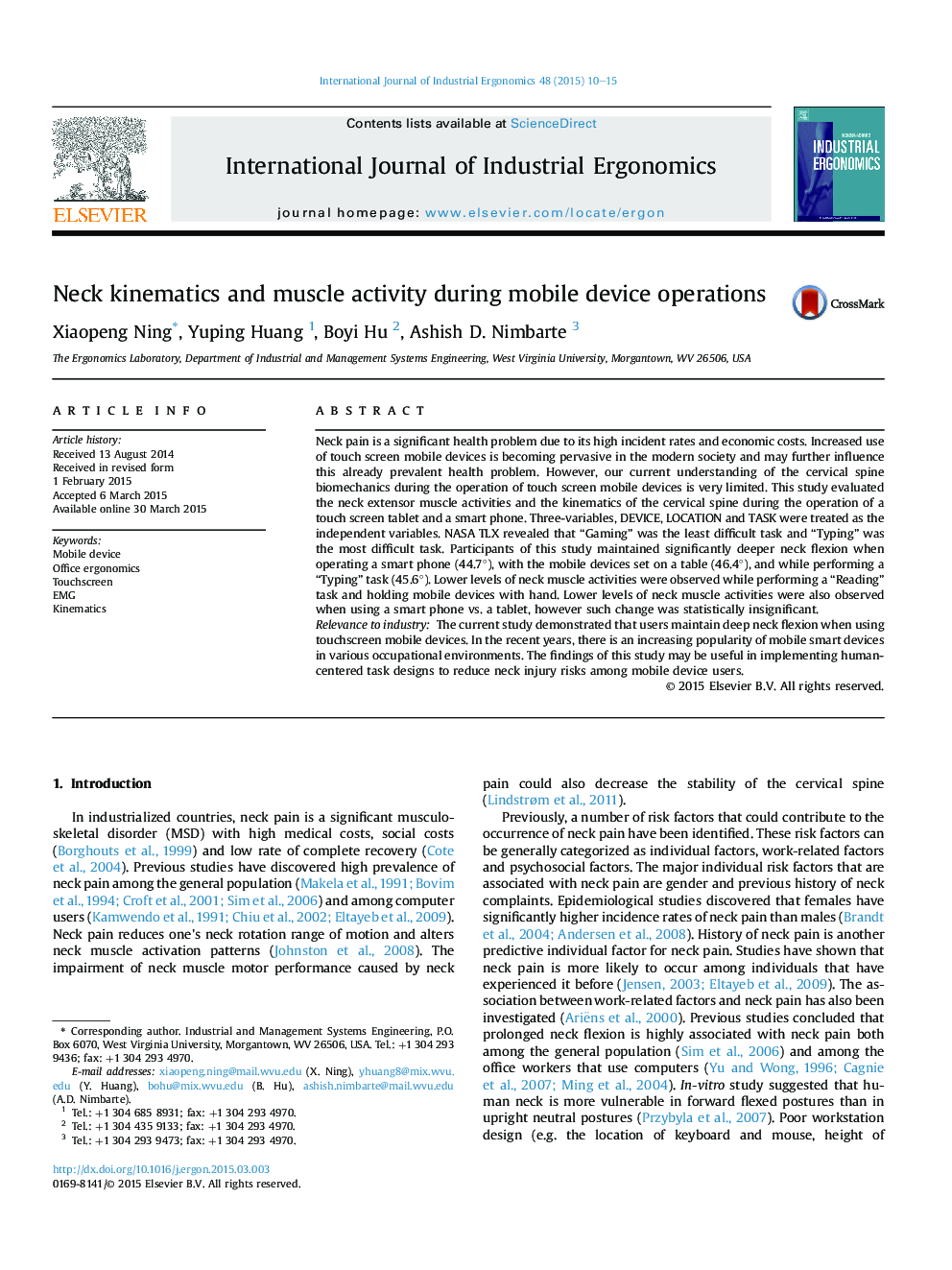| Article ID | Journal | Published Year | Pages | File Type |
|---|---|---|---|---|
| 1095988 | International Journal of Industrial Ergonomics | 2015 | 6 Pages |
•Neck kinematics and muscle activity during the use of mobile devices was investigated.•The magnitude of neck flexion was affected by the size of the screen, device location and the tasks performed.•Elevated neck muscle activities were observed while holding mobile devices in hand (vs. putting on a table).•Elevated neck muscle activities were observed while performing typing and gaming tasks (vs. reading task).
Neck pain is a significant health problem due to its high incident rates and economic costs. Increased use of touch screen mobile devices is becoming pervasive in the modern society and may further influence this already prevalent health problem. However, our current understanding of the cervical spine biomechanics during the operation of touch screen mobile devices is very limited. This study evaluated the neck extensor muscle activities and the kinematics of the cervical spine during the operation of a touch screen tablet and a smart phone. Three-variables, DEVICE, LOCATION and TASK were treated as the independent variables. NASA TLX revealed that “Gaming” was the least difficult task and “Typing” was the most difficult task. Participants of this study maintained significantly deeper neck flexion when operating a smart phone (44.7°), with the mobile devices set on a table (46.4°), and while performing a “Typing” task (45.6°). Lower levels of neck muscle activities were observed while performing a “Reading” task and holding mobile devices with hand. Lower levels of neck muscle activities were also observed when using a smart phone vs. a tablet, however such change was statistically insignificant.Relevance to industryThe current study demonstrated that users maintain deep neck flexion when using touchscreen mobile devices. In the recent years, there is an increasing popularity of mobile smart devices in various occupational environments. The findings of this study may be useful in implementing human-centered task designs to reduce neck injury risks among mobile device users.
